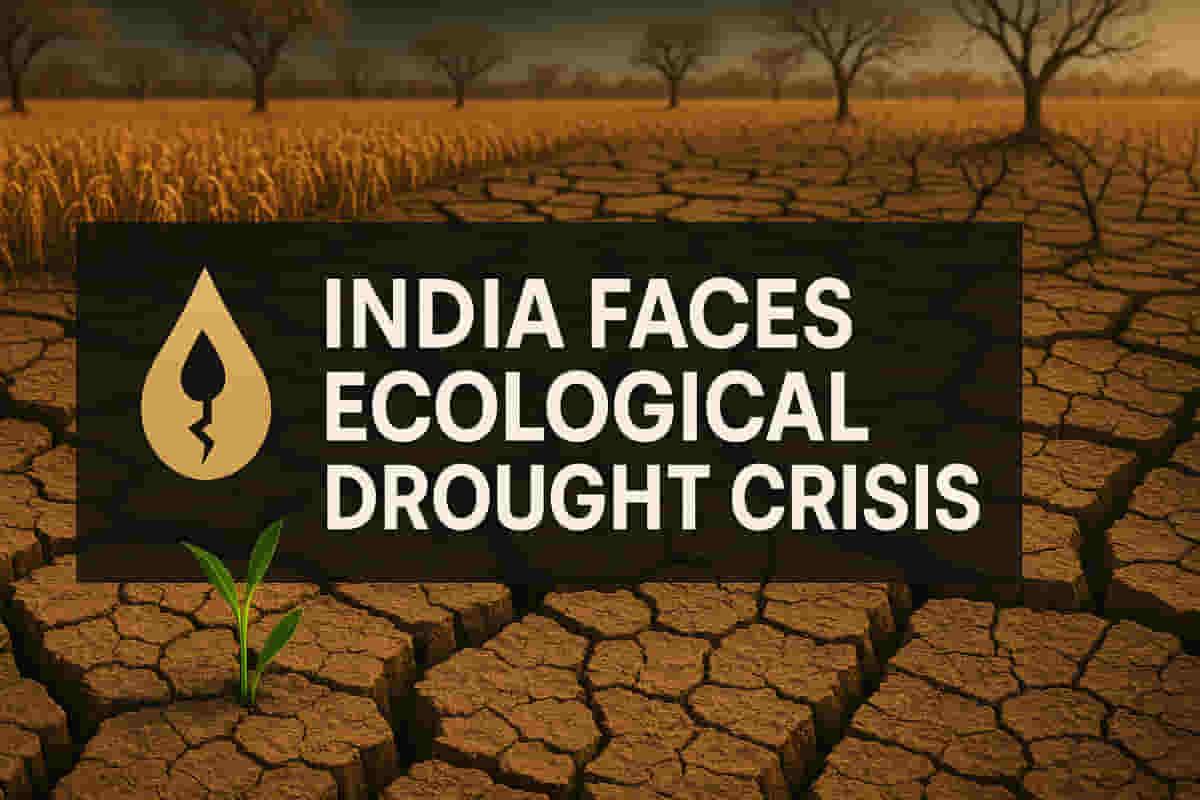India Faces Increasing Ecological Droughts Threatening Forests and Farmlands, Scientists Warn
Environment
|
Updated on 30 Oct 2025, 11:00 am
Reviewed By
Aditi Singh | Whalesbook News Team
Short Description :

▶
Detailed Coverage :
Scientists from the Indian Institute of Technology (IIT) Kharagpur have issued a stark warning about the growing threat of ecological droughts across India. These droughts are defined as extended periods of water scarcity that push ecosystems beyond their limits, disrupting their structure, function, biodiversity, and the services they provide.
The study identified key drivers including warming oceans and increasing atmospheric dryness, exacerbated by human interventions such as deforestation and altered land use. Between 2000 and 2019, meteorological aridity and ocean warming significantly contributed to these droughts, alongside land evaporative aridity and atmospheric aridity. Factors like soil moisture, temperature, and precipitation also play a role in stressing vegetation.
This phenomenon is leading to widespread 'vegetation browning'—a decline in vegetation health—especially noticeable in croplands of the eastern Indo-Gangetic Plains and southern India, and in forested areas of the Himalayas, Northeast, and central India. Forest landscape integrity is particularly compromised in the Northeast, western Himalayas, central India, and the Western Ghats.
Impact This trend poses a severe risk to India's agricultural output, potentially reducing crop yields and impacting the livelihoods of millions dependent on farming. The weakening of forest carbon sinks, crucial for climate regulation, could lead to increased carbon emissions, transforming these regions from absorbers to sources of carbon. Water security, biodiversity, and the overall socio-economic stability of the nation are significantly threatened. The study rates the current risk to vegetation health and ecosystem resilience as high. Rating: 8/10.
Difficult Terms: Ecological Drought: A prolonged period where water scarcity critically damages ecosystems, affecting their health, function, and biodiversity. Vegetation Browning: A visible sign of declining plant health, characterized by wilting or discoloration of leaves and vegetation. Carbon Sinks: Natural areas like forests that absorb more carbon dioxide from the atmosphere than they release, helping to mitigate climate change. Atmospheric Dryness (Aridity): A condition where the air has very low humidity, increasing evaporation rates. Ocean Warming: The rise in temperature of the Earth's oceans, which can influence global weather patterns. Land Evaporative Aridity: Measures how dry the land surface is, based on evaporation from soil and surface water. Hydraulic Failure: A severe stress condition in plants where air bubbles block the water transport system, leading to wilting and potentially death.
More from Environment
Latest News

Auto
Suzuki and Honda aren’t sure India is ready for small EVs. Here’s why.

Brokerage Reports
Stocks to buy: Raja Venkatraman's top picks for 4 November

Mutual Funds
Quantum Mutual Fund stages a comeback with a new CEO and revamped strategies; eyes sustainable growth

Tech
Why Pine Labs’ head believes Ebitda is a better measure of the company’s value

Banking/Finance
SEBI is forcing a nifty bank shake-up: Are PNB and BoB the new ‘must-owns’?

Industrial Goods/Services
India’s Warren Buffett just made 2 rare moves: What he’s buying (and selling)
Renewables Sector

Renewables
Brookfield lines up $12 bn for green energy in Andhra as it eyes $100 bn India expansion by 2030
Energy Sector

Energy
India's green power pipeline had become clogged. A mega clean-up is on cards.
Renewables Sector

Brookfield lines up $12 bn for green energy in Andhra as it eyes $100 bn India expansion by 2030
Energy Sector
